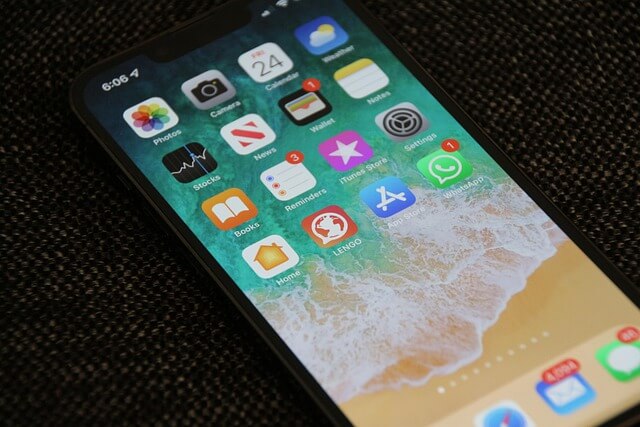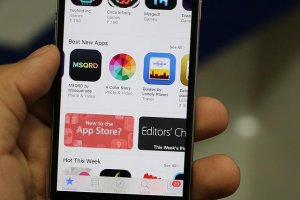1. Apple’s IOS is the Only Operating System That can be Found on Both IPhones and IPads
The only thing better than a new iPhone is a new iPhone with an iOS update. So, when Apple came out with the newest versions of their operating system, everyone was excited to see what they had in store for us. Read on if you’re looking for a review of the latest updates and all the cool features!
2. The App Store has a Larger Selection of Apps, Including Exclusives from Big Brands Like Nike and Starbucks
The iOS app store has a larger selection of apps than the Google Play Store, including exclusives from big brands like Disney and Netflix. The App Store also features many more free apps than the Google Play Store. It’s no wonder that Apple users are downloading more apps!
The other day I was watching TV, when all of a sudden my show was interrupted by an ad for this awesome new mobile game app called “Game Face“. I immediately downloaded it because it looked super fun and exciting! After playing it for about 5 minutes, I realized how addicting this game is. There were so many obstacles to overcome along the way which made me want to keep playing even longer! Mistakes To Avoid As You Start Apple Apps Development
3. Developers are More Likely to Make Their Apps Available for IOS Because it has a Much Bigger User Base Than Android
The iOS App Store is growing faster than the Android App Store. Find out why, and how to keep your IOS app development projects on top of the game.
A lot of mobile app developers choose to develop their apps for iOS first. And Android second because they’ve heard the horror stories about how difficult it is to get your app accepted by Google.
But really, it’s not that bad! In fact, here are some reasons why you should consider making your next mobile app available for both iOS and Android:
Developing IOS Apps: Pros and Cons
Advantages of IOS Development
A Demonstration. iOS mobile app development is in such high demand because these applications always perform very well. The platform is fast, reliable and easy to use, with few bugs remaining in the final build of any app.
Creating an Apple Ecosystem. As far as pros and cons of iOS app development go, this point can be of any category. On the one hand, having only one piece – for example, a smartphone – that runs such a solitary OS is inconvenient for users, as it can be difficult to transfer files from one device to another. On the other hand, working with this family of operating systems allows developers to build an entire ecosystem of devices, rather than just the target phone.
Smooth and Flawless UI/UX. Apple provides detailed guidelines for developers to create user interfaces for their apps. While it may be limited to a few, this approach generally ensures an exceptional user experience.
Disadvantages of Building for IOS
Stringent Development Environment Requirements. For native iOS development, developers need software like Xcode, which runs only on Macs. Therefore, to develop for an iOS smartphone, you will need at least one other piece of Apple technology.
App Release. The Apple App Store is generally more demanding than Google Play. Even if your app doesn’t break any rules, it can still be rejected if it is not relevant or useful enough.
Customization. iOS restricts your ability to customize the app’s interface. Also, adding some features can be difficult if they require interaction with third-party software.
Pros and Cons of Android Development
Benefits of developing for Android
Resilience. Generally, Android presents a much less restrictive environment than iOS. In terms of distributions, these app will run on virtually on any Android device, and you are unlikely to encounter any issues with hardware compatibility. The development process for Android is also more flexible.
The platform also enables a seamless development experience by relying on Java. Java is an extremely versatile programming language that Windows, Mac OS and Linux all support, allowing developers to build Android apps regardless of OS.
Learning Resources. Google provides a comprehensive knowledge base for beginners, exercises, interactive content and exhaustive training programs for various levels of Android developers.
Publishing the App. As of 2020, Google has become less generous towards the apps that developers want to post to Google Play. The review process that was previously done automatically within seven hours can now take up to a week for new developers. However, despite this innovation, most Android apps that don’t violate the company’s content policy get approved. Developers will also have to pay a much lower one-time registration fee of $25.
Going Beyond Smartphones. Developing Android apps means creating software for the entire ecosystem of devices. You can extend the functionality of your app so that it runs on Daydream and Cardboard VR headsets, Wear OS devices, Android Auto and many other platforms. While this flexibility can pose design problems, it also gives you the power to integrate your apps into users’ cars, TVs and smartwatches in addition to phones.
Drawbacks of Android Development
Quality Assurance. Fragmentation can be extremely beneficial, allowing you to develop multiple Android platforms at once, but it also makes testing extremely complex. Even in the simplest apps, developers often have to improvise as most users tend to stick to older versions of the operating system instead of updating it when an update is available.
Cost. Developing for Android is usually more time consuming than for iOS. Both development and subsequent quality assurance lead to cost escalation respectively.
Users Spend Less Inside the App. Android users tend to favor free apps, and they also spend less on in-app purchases than iOS users.
Potential Security Issues. Android is an open-source platform, and it has a higher chance of becoming a victim of cyberattacks than the more closed iOS counterpart.
4. There are More People in the U.S., Europe, and Japan With an IPhone or IPad Than There are With an Android Device
We’re talking about mobile app developers. We know that you create apps to make people’s lives easier, but what is the point if they don’t have a phone or tablet? In this blog post we’ll be discussing how many people in these three regions own an iPhone or iPad.
The U.S., Europe, and Japan are all very different when it comes to smartphone ownership rates. Each has its advantages and disadvantages for developers looking to reach their target markets. For example, over 92% of people in the U.S. Own an iPhone or iPad compared with just 54% in Japan (with Korea coming in at 73%). However, while the U.S has more potential customers than other countries on this list, it also means
5. Apple Also Offers Developers a 70% Cut of App Sales Revenue Compared to Google’s 30% Rate
Apple is making their developer offer even sweeter. The company announced yesterday that they will be offering developers a 70% cut of app sales revenue compared to Google’s 30%. This gives mobile app developers an additional incentive to focus on Apple’s operating systems, iOS and Mac OS X.
6. Consumers Don’t Have to Worry About Compatibility Issues When They Buy New Devices Because All IOS Devices Work With One Another
“Consumers don’t have to worry about compatibility issues when they buy new devices. They shouldn’t have to upgrade their software every time a new version comes out, either. That’s why we created the Mobile App Compatibility Testing Tool.”





